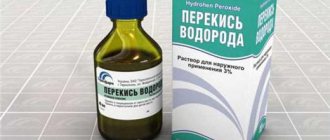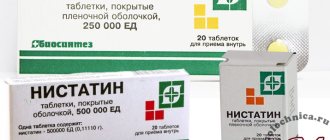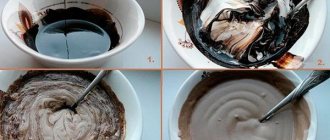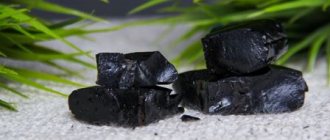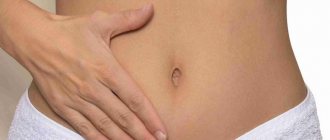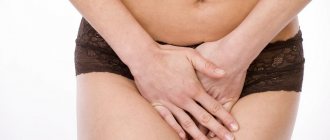Causes of thrush
Thrush often appears in women before menstruation, and the more allergic the woman, the more severe the manifestations.
There are 2 types of causes leading to thrush. These are exogenous and endogenous.
Endogenous causes include:
- weakened immune response: untreated STIs, pregnancy, gastrointestinal diseases;
- chronic diseases of organs and systems of the body;
- endocrinological disorders: diabetes mellitus, obesity;
- long-term use of antibiotics;
- wearing synthetic pads daily;
- long-term use of hormonal contraceptives;
- violation of diet: consumption of foods high in carbohydrates, abuse of fried, canned and smoked foods;
- psychosomatic phenomena such as severe stress.
Exogenous causes:
- sexual contact with an infected Candida fungus, under a number of circumstances (low resistance of your body, disrupted hormonal levels);
- in case of close contact with a patient with candidiasis, use general hygiene products;
- in the first year of life.
Often thrush does not come alone, and along with it there may be infectious diseases such as trichomonas, gonorrhea, and chlamydia. Therefore, complaints may not be standard, however, there are symptoms characteristic only of thrush.
Contraindications
Peroxide for thrush cannot be used in all cases. Douching is contraindicated in the presence of the following pathologies:
- ulcerative lesions of the cervix and vaginal mucosa;
- erosion;
- acute inflammatory process of the internal genital organs;
- thyrotoxicosis;
- hemophilia.
It is also impossible to prevent candidiasis in the postoperative period and during menstrual bleeding.
Taking smears before the procedure is a necessity. It is important to know the degree of vaginal cleanliness and microflora. If the microflora is disturbed, washing cannot be carried out.
Symptoms
Symptoms of candidiasis:
- white, “curdy” discharge from the genital tract;
- itching and burning in the genital area;
- pain during urination, as urine begins to corrode the inflamed membrane;
- pain during sexual intercourse;
- swelling of the genital mucosa.
3 forms of candidiasis:
- Candida carrier.
- Acute course.
- Chronic form (or recurrent).
Recommendations
Douching with hydrogen peroxide or other liquids must be carried out in strict compliance with all rules. By adhering to the following recommendations, you will forget about the hated problem:
- To rinse the vagina, you must use a separate syringe.
- The solution should be prepared exclusively with boiled water. Unboiled liquid contains a large number of bacteria, which can aggravate problems.
- Peroxide is added to water before using the solution. The medicine is not prepared in advance, as it quickly loses its medicinal properties.
- It is important to stick to the recipe and not increase the amount of hydrogen peroxide. A concentrated solution does not mean that getting rid of thrush will happen faster; in this case, the situation may worsen due to a burn of the mucous membrane.
- Peroxide for thrush is used after hygiene procedures.
Treatment of thrush with peroxide is carried out until all symptoms of the disease disappear. Do not stop douching immediately after relief occurs. It is important to complete the full course of treatment.
Treatment
Each woman has her own methods of dealing with this disease. You need to know that there are recurrent forms of thrush, which may be caused by insufficient dosage of the drug, timing, or an irresponsible approach to quality treatment.
Therefore, it is important to discuss each method you are considering with your doctor! Self-medication is dangerous even with alternative treatments. Douching with hydrogen peroxide for thrush is one such method.
Douching is a method of treating the vaginal mucosa with medications or special herbs. Douching is used for many gynecological diseases. This procedure can be done either in a hospital or at home.
To treat thrush, different methods and means are used, these can be: herbal preparations, soda, medications, boric acid, potassium permanganate, hydrogen peroxide. Hydrogen peroxide has a detrimental effect on many bacteria, fungi and viruses, creating an unfavorable environment.
Hydrogen peroxide or peroxide is an environmental product, so it is non-toxic and hypoallergenic. Peroxide practically does not cause pain upon contact with mucous or wound surfaces.
Reviews
Reviews about the use of hydrogen peroxide to treat thrush are mostly positive and many women write about the effectiveness of the substance as a douche and solution for washing affected areas of the body. Doctors also confirm the appropriateness of use and do not prohibit the procedure in a comprehensive treatment regimen.
You can leave your reviews about the use of hydrogen peroxide to treat thrush, they will be useful to other users of the site!
Svetlana, Sochi
I constantly get thrush, and during the period of exacerbation, the itching is simply unbearable! In order to remove all the negative signs of the disease, I use douching based on hydrogen peroxide. I take a solution of low concentration and carry out the procedure before going to bed.
After douching, relief immediately occurs and the itching goes away. After several uses, the disease subsides, and effective antifungal agents prevent the organism from reproducing. Therefore, this procedure helps a lot and is also absolutely painless and inexpensive!
Oksana, Krasnodar
I also constantly douched if thrush started. Moreover, the use of hydrogen peroxide not only eliminates discomfort, but also actually gets rid of the presence of fungus. To do this, you just need to do the procedure once for 10 days.
The only drawback of douching with hydrogen peroxide is possible allergic manifestations in relation to an alkaline environment, but I have never experienced such complications. Therefore, I consider the procedure to be moderately effective and suitable for the quick and effective treatment of thrush!
Treatment of thrush using douching with hydrogen peroxide can be called a completely affordable procedure, easily carried out at home without serious costs with a high degree of effectiveness. The effect of the active substance depends on the correctness of the process and compliance with all the rules of technology!
16 December 2020 19:01 15406
Today, there are a huge number of ways to treat thrush. Modern medicine offers drugs to get rid of fungal diseases, both for external and internal use. However, thrush is not so easy to cure, even with the help of the most modern procedures and medications.
Douching as a way to combat candidiasis
The disease returns, and according to statistics, the percentage of patients is not decreasing. Many studies prove that this disease is closely associated with psychosomatic causes, in particular with severe stress. Treatment of thrush can be carried out using both traditional methods and folk remedies and using alternative medicine. Douching with hydrogen peroxide for thrush is one way to combat it.
What do you need to know when douching with oxygen peroxide?
- You can douche with peroxide diluted with water; It is strictly forbidden to douche with the whole preparation (you can get burns);
- the concentration should be: 1 tablespoon of 3% hydrogen peroxide per 1 liter of water;
- the solution temperature should not be higher than 40 C;
- prepare the solution fresh each time;
- do not douche for more than 15 minutes;
- uncontrolled use of this method can disrupt the vaginal microflora;
- peroxide is not used as a prophylaxis;
- Treatment of thrush with hydrogen peroxide can only be successful in combination with antifungal drugs prescribed by the doctor.
In order to understand whether the peroxide treatment method is suitable for you, you need to familiarize yourself with the indications and contraindications.
Indications:
- candidiasis;
- putrefactive processes in the vagina (more common with STIs);
- vulvovaginitis;
- ulcerations of the vagina and vulva.
Contraindications:
- pregnancy and postpartum period;
- postoperative period;
- menstruation;
- cervical erosion;
- acute course of inflammatory processes of the genital organs.
The use of hydrogen peroxide in the treatment of thrush
Every person knows a colorless and practically odorless liquid called hydrogen peroxide. It is used for various diseases, and it is always in the home medicine cabinet. Hydrogen peroxide has an antiseptic and antimicrobial effect, and this is especially important in the treatment of thrush. At home, the solution is used for daily douching.
Hydrogen peroxide
Not much is known about the properties of perhydrol; it is usually used to stop bleeding, as an antimicrobial agent, for skin damage, and in cosmetology. But not many people know that using this remedy to treat thrush gives very good results. Hydrogen peroxide is successfully used in gynecology; it is used by dermatologists and venereologists for the treatment and prevention of various diseases, and in particular thrush.
Perhydrol influences the development of the fungus and suppresses its active growth. Unlike other recommended remedies, hydrogen peroxide has no side effects and therefore can be used to treat candida by almost any woman. However, many doctors prefer not to prescribe douching with peroxide, because if the ratio of water and peroxide is diluted incorrectly, you can get a burn to the vaginal mucosa. This is a rare occurrence, but the possibility of such consequences exists, so doctors believe that it is better to use more harmless means for treatment than hydrogen peroxide.
If you decide to use peroxide for douching, you need to remember simple rules:
- Hydrogen peroxide should be diluted in boiled water;
- you need to take a 3% perhydrol solution,
- For a liter of boiled water you need to take 1 tablespoon of solution;
- carry out the procedure once a day;
- The duration of treatment ranges from two weeks to a month.
When should you urgently stop peroxide treatment?
- swelling of the genital organs;
- copious discharge;
- itching, burning;
- pain (spastic)
If you have such symptoms, you should visit a gynecologist as soon as possible to adjust the treatment. Most often, such complaints can be detected when using a concentrated solution.
There are many advantages to using hydrogen peroxide for thrush as a douche, but you should not be zealous, since by killing the pathogenic flora, you can also destroy the normal biocenosis of the vagina.
Therefore, after douching, suppositories should be administered to normalize the balance of microflora.
Application
Treating thrush with hydrogen peroxide is a serious decision; it is important to strictly adhere to the rules for preparing the solution. After all, even a small increase in the amount of the drug can lead to unpredictable consequences and complications.
Hydrogen peroxide for candidiasis - preparation of solution:
- Boil a liter of water in a clean container. It is bought in a store and cannot be used from the tap. If you use tap water, you will first need to filter it and then boil it.
- After boiling, you need to let the water cool to room temperature. Hot liquid should not be used to prepare medicine. This can cause burns to the vaginal mucosa, and lead to longer treatment.
- Preparation of a solution of hydrogen peroxide for thrush in women: take 500 ml of water and add 1 tbsp. l. 3% solution.
How to douche with hydrogen peroxide for thrush? For the treatment to be beneficial, it is important to use the prepared medicine correctly. To do this, the woman needs to lie down in a comfortable position and perform the manipulation while standing, then the entrance to the vagina is lubricated with Vaseline (you can use baby cream). The tip of the syringe is carefully inserted 7 cm. The drug is administered slowly, the duration of the manipulation is 15 minutes.
To make the anti-inflammatory effect more effective, you can add 2-3 drops of tea tree oil to the prepared medicine. It is also allowed to add herbal decoctions (chamomile, string, calendula).
Adding other medicinal decoctions to the solution has a calming and anti-inflammatory effect on the body. Also, the listed herbs protect the mucous membrane of the pelvic organs from the aggressive effects of peroxide.
The frequency of manipulation is determined by the gynecologist. Typically, peroxide is used for thrush for no longer than 1 week. After the signs of the disease have reduced, douching is carried out every other day for another 7 days. Then treatment should be stopped and a re-examination should be carried out, taking smears.
Step-by-step douching
Step 1
First you need to select an item for douching. This could be a bulb with a tip, a syringe, or an Esmarch cup. The selected item should be used only for its intended purpose (it is unacceptable to consider them as enemas; the syringe is new, disposable, without a needle.
Next, you need to disinfect and lubricate the tip with Vaseline. Fill the syringe with the prepared solution.
Step 2
Wash the external genitalia with warm water.
Step 3
Douching is best done in the bath. Lie in a comfortable position and spread your legs bent at the knees. This way you will better irrigate the entire vaginal mucosa and, above all, in this way you will ensure the correct direction of the water stream.
Step 4
You should insert the tip no more than 7 cm and gently, under slight pressure, squeeze the bulb. The solution is introduced slowly.
Before each douching, instruments must be disinfected.
There are several treatment regimens using peroxide douching:
- Douching once a day for a month, in combination with taking an antifungal drug orally.
- Douching 2 times a day for a week, in combination with taking an antifungal drug orally.
Already after the first douching, you can notice the result: the discomfort caused by thrush is reduced - itching, burning, and discharge is reduced.
What effect does hydrogen peroxide have on thrush?
What is perhydrol
Perhydrol solution is attractive for the treatment of thrush because it releases oxygen, which is an oxidizing agent and affects candida, as well as other microorganisms. The oxidative process stops the growth of fungi and thrush is gradually treatable, although it is quite difficult to talk about complete recovery only through the use of hydrogen peroxide, in particular douching. Treatment requires a set of measures that will lead to complete restoration of the body.
Douching with hydrogen peroxide should be done daily, no more than once a day. When the vagina is cleared of discharge associated with thrush, the development and growth of the fungus slows down.
Already on the first day, after the start of douching, the unpleasant sensations caused by thrush, such as itching and burning, are significantly reduced, and the discharge itself becomes smaller.
Hydrogen peroxide has a powerful antiseptic effect, which is also important in the treatment of thrush. Douching restores the damaged vaginal microflora and slows down the growth of fungus.
What can replace hydrogen peroxide?
Aseptolin, catapol, sanguiritrin, hexicon, vagotil, miramistin, chlorhexidine.
All these remedies must also be taken with caution and only after consultation with a specialist.
Preparations that are used in the treatment of candidiasis: suppositories, tablets, capsules, ointments, creams. There are not many active substances that can cure the disease: Clotrimazole (canestene clotrimazole), Miconazole (Klion-D), Isoconazole (gyno-travogen), Itroconazole (rumicosis), Nystatin (polygynax, terzhinan), Natamycin (pimafucin), Ketoconazole (mycozoral).
Side effects
The solution must be prepared according to all the rules; if too high a concentration is used, you can get a burn to the vaginal mucosa. The use of the drug may lead to signs of an allergic reaction. These include itching and mild burning, rash and redness on the external genitalia.
Spasmodic pain is also possible. If such side effects occur, you should immediately consult a doctor for medical help.
List of contraindications to douching with hydrogen peroxide
It is not recommended for women to douche with hydrogen peroxide if they have diseases and conditions such as:
- pathologies of the blood coagulation system and lack of fibrinogen;
- increased thyroid function;
- Dühring's dermatitis;
- severe kidney or liver damage;
- idiopathic thrombocytopenic purpura;
- disseminated intravascular coagulation syndrome;
- pregnancy.
Vaginal douching with hydrogen peroxide is not carried out in cases of microflora disturbance, abnormal hormonal levels, risk of burns, or injuries to the mucous membrane.
Advantages and disadvantages
Many women believe that douching is harmful because it washes away the beneficial flora in the vagina. In 2003, two doctors, Dr. Martens and Monif, tried to confirm the benefits and effectiveness of the procedure.
They published their findings on hydrogen peroxide douching, which received positive reviews, in the journal Infectious Diseases in Obstetrics and Gynecology. In their study, doctors found that the procedure has a good effect on the microbial flora.
Researchers found that 89% of women with bacterial vaginosis did not have a fishy odor for three full months during the study. The method they used in the study was an overnight douche of peroxide with 2 tablespoons of a 3% solution diluted with water to make a 1% solution. They repeated the procedure once a day for a week.
According to this study, doctors confirmed the effectiveness and benefits of hydrogen peroxide and douching. The procedure turned out to be safe and can be performed on women with infectious and viral pathologies of the vagina.
How does peroxide work?
Here we will deviate a little towards the history of medicine. How did you first come to the conclusion that perhydrol began to be used in gynecology as part of the fight against thrush? The fact is that studies have shown that this solution is natural for our body. Every woman’s body contains both peroxide and fungal microorganisms Candida. However, the body produces very little peroxide, therefore, if a number of other factors intervene that favor the growth of fungal colonies, there will clearly not be enough of it.
Peroxide is an unstable compound that breaks down into oxygen and water. Oxygen is known for its antiseptic properties and chemically helps kill the yeast infection. However, great caution should be exercised, especially if you decide to douche with hydrogen peroxide on your own initiative. Reviews indicate that exceeding the concentration leads to burns and pain. This occurs especially often if the area affected by the fungal infection is already very inflamed or the infection is quite serious.
How to do douching
- For douching, a 1% solution of hydrogen peroxide is used, which is obtained by dissolving 100 ml of a three percent drug in 300 ml of warm boiled water. You can also use a weaker solution prepared from 1 liter of warm boiled water and 2 tbsp. l. 3% hydrogen peroxide.
- It is desirable that the temperature of the finished product be within 37–38°C.
Special syringe for vaginal irrigation
- Immediately before the manipulation, the syringe should be treated with a disinfectant solution or boiled.
Important! For douching, you cannot use a bulb that was used to cleanse the intestines!
The duration of the manipulation is 10–15 minutes. Initially, it is recommended to douche twice a day, then once, and after improvement occurs, every other day . Subsequently, the number of procedures is reduced to one or two per week. The course of treatment should not exceed 7 days.
It is prohibited to use undiluted 3% hydrogen peroxide for douching.
Preparing the working solution
Before we go further, we will dwell a little more on how to dilute hydrogen peroxide for douching. Boiled water should cool to 40 degrees, the water should be pleasantly warm to the touch. Depending on the doctor's prescription, you need to add 1 tablespoon of peroxide to it.
It is necessary to prepare a syringe or bulb by thoroughly boiling and cooling on a sterile napkin. Douching with hydrogen peroxide (3 percent) helps normalize conditions for the life of beneficial bacteria. In turn, they control the proliferation of fungal microorganisms.
This procedure helps very well if the vaginal microflora is disturbed and beneficial bacteria are no longer able to stop the proliferation of pathogenic microflora. In this case, as soon as the clinical symptoms disappear, you should immediately stop performing the procedure. However, we must remember that it is impossible to completely cure thrush with peroxide alone; in addition, gynecologists prescribe antifungal therapy and other medications at their discretion.


